MENU
The Electronic Scholarly Publishing Project: Providing access to classic scientific papers and other scholarly materials, since 1993. More About: ESP | OUR CONTENT | THIS WEBSITE | WHAT'S NEW | WHAT'S HOT
Comparative Timelines
The ESP Timeline (one of the site's most popular features) has been completely updated to allow the user to select (using the timeline controls above each column) different topics for the left and right sides of the display.
Select:
New Left Column
New Left Column
Dates
Decade
New Right Column
New Right Column
(no entry for this year)
1450
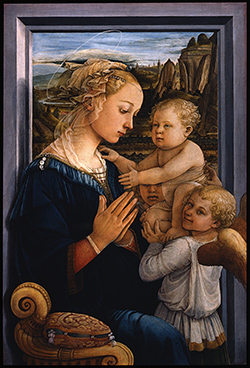 Painting by Filippo Lippi: (The Uffizi) Madonna with Child. The date in which it was executed is unknown, but most art historians agree that it was painted during the last part of Lippi's career, between 1450 and 1465. It is one of the few works by Lippi which was not executed with the help of his workshop and was an influential model for later depictions of the Madonna and Child, including those by Sandro Botticelli. The painting is housed in the Uffizi Gallery, Florence, Italy, and is therefore commonly called "The Uffizi Madonna" among art historians.
Painting by Filippo Lippi: (The Uffizi) Madonna with Child. The date in which it was executed is unknown, but most art historians agree that it was painted during the last part of Lippi's career, between 1450 and 1465. It is one of the few works by Lippi which was not executed with the help of his workshop and was an influential model for later depictions of the Madonna and Child, including those by Sandro Botticelli. The painting is housed in the Uffizi Gallery, Florence, Italy, and is therefore commonly called "The Uffizi Madonna" among art historians.
In Kyoto, the Ryoanji Zen temple is built. It has a garden of fifteen rocks on raked white sand — an austerity to aid meditation.
(no entry for this year)
1451
(no entry for this year)
(no entry for this year)
1452
(no entry for this year)
(no entry for this year)
1453
Constantinople has been declining economically, in population and military strength. Using European artillery and experts, the Ottoman Turks break through Constantinople's walls. Disciplined Muslim forces capture the city. This ends Constantinople as the center of Eastern Orthodox Christianity and the heart of the remains of the Roman Empire.
The French capture Bordeaux, the last place the English hold except for the port city of Calais, on the English channel. The Hundred Years' War ends without a formal treaty signed and no renouncing of rights to the French throne by an English king. Nationalism had increased, and common people in England are upset at what they see as England having lost the war. With the end of the Hundred Years' War, trade revives and economic depression ends.
The French defeat of the English at Castillon ends the Hundred Years' War.
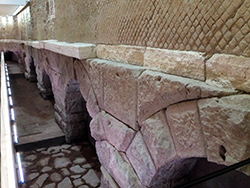 The Aqua Virgo was one of the eleven Roman aqueducts that supplied the city of ancient Rome. It was completed in 19 BC by Marcus Agrippa, during the reign of the emperor Augustus and was built mainly to supply the contemporaneous Baths of Agrippa in the Campus Martius. At its peak, the aqueduct was capable of supplying more than 100,000 cubic meters (100,000,000 L) of water per day. The name is thought to be derived from the purity and clarity of the water because it does not chalk significantly. In 1453, Pope Nicholas V orders a complete restoration and extensive remodelling from its source to its terminus points between the Pincio and the Quirinale and within Campo Marzio and consecrated it Acqua Vergine. This also led the water to the Trevi Fountain and the fountains of Piazza del Popolo, which it still serves today.
The Aqua Virgo was one of the eleven Roman aqueducts that supplied the city of ancient Rome. It was completed in 19 BC by Marcus Agrippa, during the reign of the emperor Augustus and was built mainly to supply the contemporaneous Baths of Agrippa in the Campus Martius. At its peak, the aqueduct was capable of supplying more than 100,000 cubic meters (100,000,000 L) of water per day. The name is thought to be derived from the purity and clarity of the water because it does not chalk significantly. In 1453, Pope Nicholas V orders a complete restoration and extensive remodelling from its source to its terminus points between the Pincio and the Quirinale and within Campo Marzio and consecrated it Acqua Vergine. This also led the water to the Trevi Fountain and the fountains of Piazza del Popolo, which it still serves today.
(no entry for this year)
1454
(no entry for this year)
(no entry for this year)
1455
With humanistic leanings and an enthusiasm for literature and art, Pope Nicholas V has in the last five years given rebirth to the Vatican Library — putting it on course to becoming one of the largest libraries in the world. He dies at age 58.
In the German town of Mainz, Johann Gutenberg, using metal type in a screw-type printing press, prints the "Gutenberg" Bible. His printing press is a step up from screw presses used in agriculture. He was the first European to use type-setting, beginning around 1439. Printing was to increasing the circulation of literature, stimulate a rise in literacy, knowledge and science.
(no entry for this year)
1456
Judges and commissioners in the archbishop's palace in the city of Rouen declare that Joan of Arc was innocent of the charges that led to her execution — after nineteen years of appeal and almost one year of hearings. The Archbishop declares the case ended.
The Ottoman Turks overrun Athens, begin a stay that will last 400 years, and they turn the Parthenon into a mosque.
(no entry for this year)
1457
(no entry for this year)
(no entry for this year)
1458
(no entry for this year)
(no entry for this year)
1459
(no entry for this year)
ESP Quick Facts
ESP Origins
In the early 1990's, Robert Robbins was a faculty member at Johns Hopkins, where he directed the informatics core of GDB — the human gene-mapping database of the international human genome project. To share papers with colleagues around the world, he set up a small paper-sharing section on his personal web page. This small project evolved into The Electronic Scholarly Publishing Project.
ESP Support
In 1995, Robbins became the VP/IT of the Fred Hutchinson Cancer Research Center in Seattle, WA. Soon after arriving in Seattle, Robbins secured funding, through the ELSI component of the US Human Genome Project, to create the original ESP.ORG web site, with the formal goal of providing free, world-wide access to the literature of classical genetics.
ESP Rationale
Although the methods of molecular biology can seem almost magical to the uninitiated, the original techniques of classical genetics are readily appreciated by one and all: cross individuals that differ in some inherited trait, collect all of the progeny, score their attributes, and propose mechanisms to explain the patterns of inheritance observed.
ESP Goal
In reading the early works of classical genetics, one is drawn, almost inexorably, into ever more complex models, until molecular explanations begin to seem both necessary and natural. At that point, the tools for understanding genome research are at hand. Assisting readers reach this point was the original goal of The Electronic Scholarly Publishing Project.
ESP Usage
Usage of the site grew rapidly and has remained high. Faculty began to use the site for their assigned readings. Other on-line publishers, ranging from The New York Times to Nature referenced ESP materials in their own publications. Nobel laureates (e.g., Joshua Lederberg) regularly used the site and even wrote to suggest changes and improvements.
ESP Content
When the site began, no journals were making their early content available in digital format. As a result, ESP was obliged to digitize classic literature before it could be made available. For many important papers — such as Mendel's original paper or the first genetic map — ESP had to produce entirely new typeset versions of the works, if they were to be available in a high-quality format.
ESP Help
Early support from the DOE component of the Human Genome Project was critically important for getting the ESP project on a firm foundation. Since that funding ended (nearly 20 years ago), the project has been operated as a purely volunteer effort. Anyone wishing to assist in these efforts should send an email to Robbins.
ESP Plans
With the development of methods for adding typeset side notes to PDF files, the ESP project now plans to add annotated versions of some classical papers to its holdings. We also plan to add new reference and pedagogical material. We have already started providing regularly updated, comprehensive bibliographies to the ESP.ORG site.
ESP Picks from Around the Web (updated 06 MAR 2017 )
Old Science
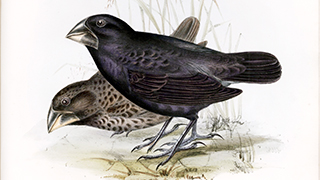
Weird Science
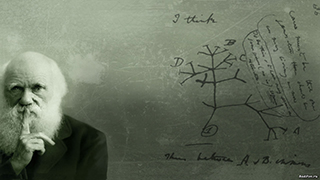
Treating Disease with Fecal Transplantation
Fossils of miniature humans (hobbits) discovered in Indonesia
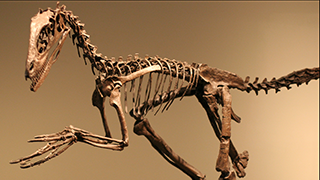
Dinosaur tail, complete with feathers, found preserved in amber.
Astronomy
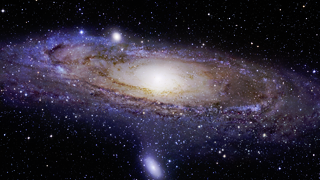
Mysterious fast radio burst (FRB) detected in the distant universe.